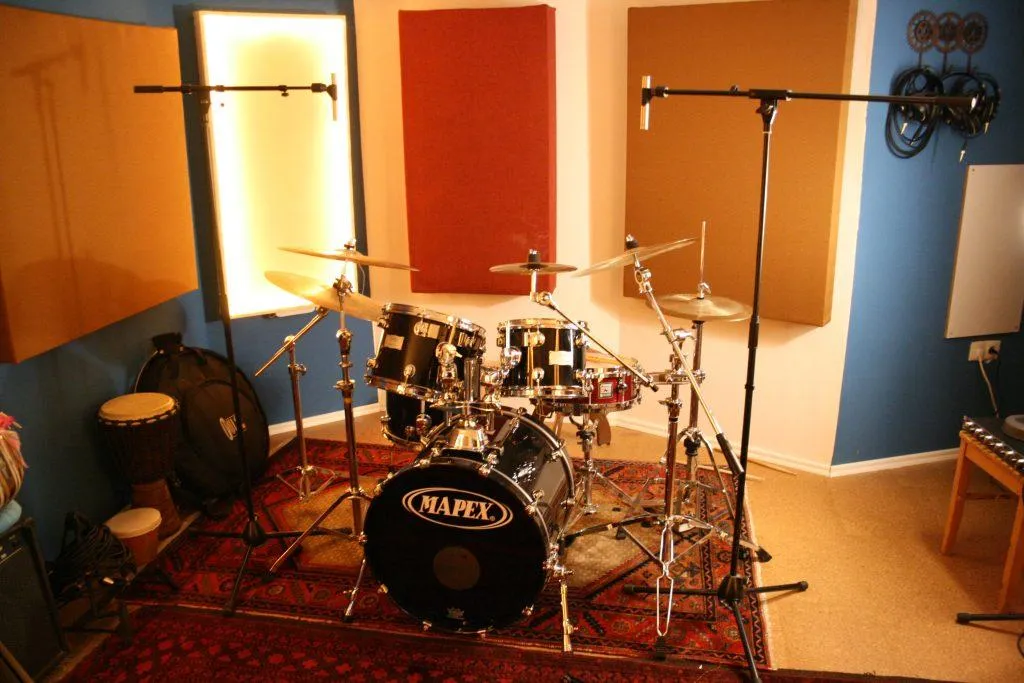Kids & Adult Music Lessons In Cochrane, Alberta!
Teaching Piano Lessons, Guitar Lessons, Voice Lessons, Drum Lessons and Violin Lessons!
Private Lessons With Music Tutors in Cochrane
Beginner & Affordable Friendly Music Lessons

Recording Your Drum Covers: A DIY Guide to Home Studio Setup at Cochrane Music Academy
Recording Your Drum Covers: A DIY Guide to Home Studio Setup
We're excited to share a comprehensive guide on setting up your own home recording studio specifically tailored for drum covers. Whether you're a seasoned drummer or just starting your musical journey, creating high-quality drum covers from the comfort of your home is an achievable goal. Let's dive into the essentials for building your DIY home studio.
Equipment Recommendations:
1. Drum Kit:
Ensure your drum kit is well-maintained, with fresh heads and properly tuned drums. This lays the foundation for a clean and professional sound.
2. Microphones:
Invest in a quality set of microphones to capture each element of your drum kit. A popular configuration includes a kick drum mic, snare mic, and overhead mics for cymbals. Shure SM57 and AKG D112 are excellent choices.
3. Audio Interface:
Connect your microphones to an audio interface. Focusrite Scarlett and PreSonus AudioBox are reliable options for beginners, offering great sound quality and ease of use.
4. Headphones:
Closed-back headphones are essential for monitoring while recording. They prevent sound leakage and provide accurate playback. Brands like Audio-Technica and Beyerdynamic offer affordable yet high-quality options.
5. Recording Software:
Choose a digital audio workstation (DAW) that suits your preferences. Popular options include Ableton Live, Logic Pro, or Reaper. Experiment with different DAWs to find the one that aligns with your workflow.
Recording Techniques:
1. Room Acoustics:
Consider your room's acoustics. Add carpets, curtains, or acoustic panels to minimize unwanted reflections and create a controlled recording environment.
2. Mic Placement:
Experiment with mic placement to find the sweet spots for each drum. For the kick drum, place the mic just inside the sound hole. Position overhead mics to capture the overall kit sound.
3. Levels and Gain Staging:
Maintain proper input levels to avoid distortion. Set gain levels on your interface so that your loudest hits don't clip. Consistent levels ensure a balanced and polished recording.
4. Multiple Takes:
Don't be afraid to record multiple takes. This allows you to choose the best performance during the editing phase. It's a common practice among professional drummers.
Tips for Editing and Sharing:
1. Editing Software:
Use your chosen DAW for editing. Trim unnecessary sections, adjust timing, and polish your performance. Pay attention to details like timing and dynamics.
2. Mixing:
Experiment with mixing techniques to enhance the clarity and balance of your drum cover. Learn about EQ, compression, and reverb to make your drums sit well in the mix.
3. Video Editing:
Sync your edited audio with your video footage. Software like Adobe Premiere Pro or Final Cut Pro can help you achieve a professional-looking drum cover video.
4. Online Platforms:
Share your drum covers on popular platforms like YouTube, Instagram, or TikTok. Engage with your audience, respond to comments, and consider collaborating with other musicians.
5. Continuous Improvement:
Use each recording as an opportunity to improve. Listen critically to your covers, identify areas for growth, and set goals for your next recording.
Congratulations on taking the first steps toward creating impressive drum covers at home! With the right equipment, recording techniques, and editing tips, you'll be well on your way to sharing your musical talent with the world. Happy drumming from Cochrane Music Academy 🥁🎶
Serving families in Sunset Ridge, Heartland, Fireside, Glenbow, Riversong, and Heritage Hills.
Private music lessons in piano, guitar, drums, voice, violin, and more.
All Rights Reserved 2022 - Privacy Policy




